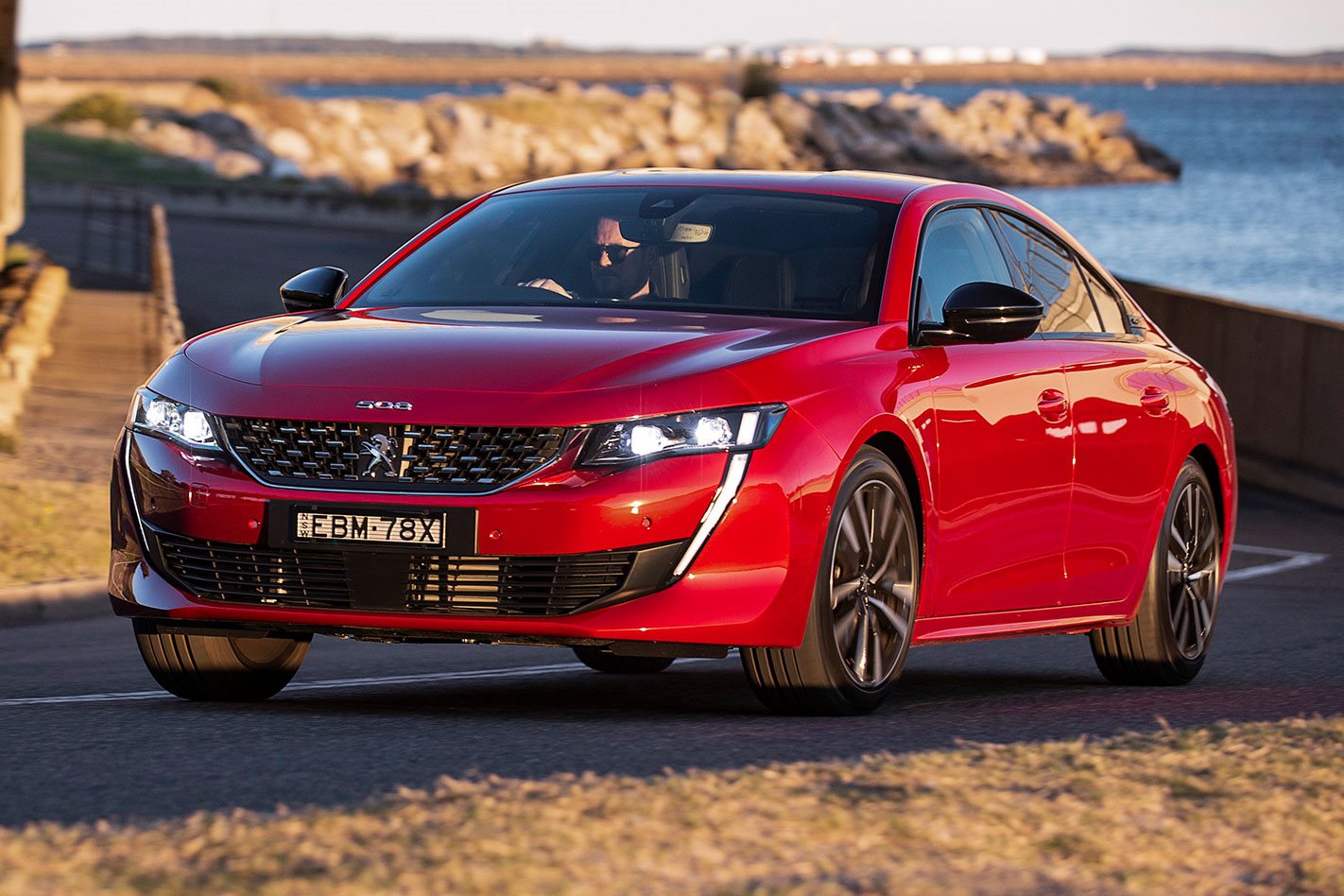Things we like
- Exterior design
- Standard comfort, convenience, and safety equipment
- Stylish cabin
- Packaging practicality
Not so much
- Coarse-chip road noise
- Lack of sensible manual transmission mode
- Complexity of configuring individual drive mode
- Swift, not fast
The Wheels Verdict: The final piece of Peugeot’s range falls into place with a satisfying click. This a mid-sizer with plenty to recommend it, from the exterior design, to the practically of the Fastback’s wide-opening hatch, the Sportwagon’s load-lugging style, the inviting, well-equipped interior of both, and the five-year warranty. It’s also a fine drive, with a smooth, quiet, peppy turbo four, and eager dynamics courtesy of the light weight. Road noise on coarse-chip could be better, and there are a few operational quirks, but it still makes a strong case for itself.
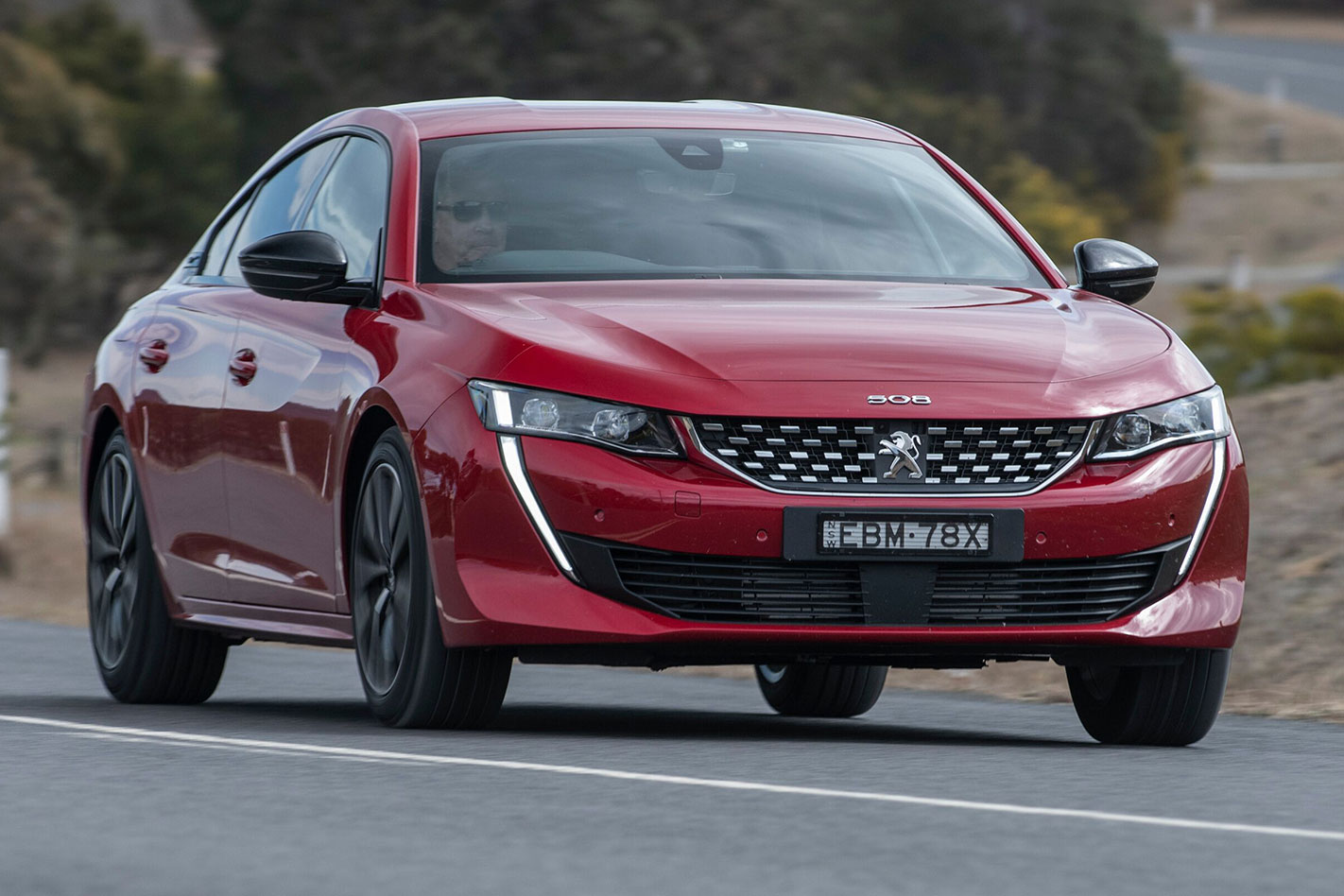
The new flagship of Peugeot’s Australian range. A midsize liftback and wagon offered in just one (high) spec level and with just a single powertrain; a 1.6-litre turbo-petrol with eight-speed auto driving the front wheels.
WHY WE’RE TESTING IT
Dep-ed Andy Enright first drove the 508 GT Fastback in France as part of his assault on Alpe d’Huez on both two wheels and four (Wheels, February 2019), and he came away enthused by the car, and with more of a bitter hatred for the bicycle. This is our first opportunity to drive both Fastback and Sportwagon, in Aussie spec and with confirmed pricing, on local roads.
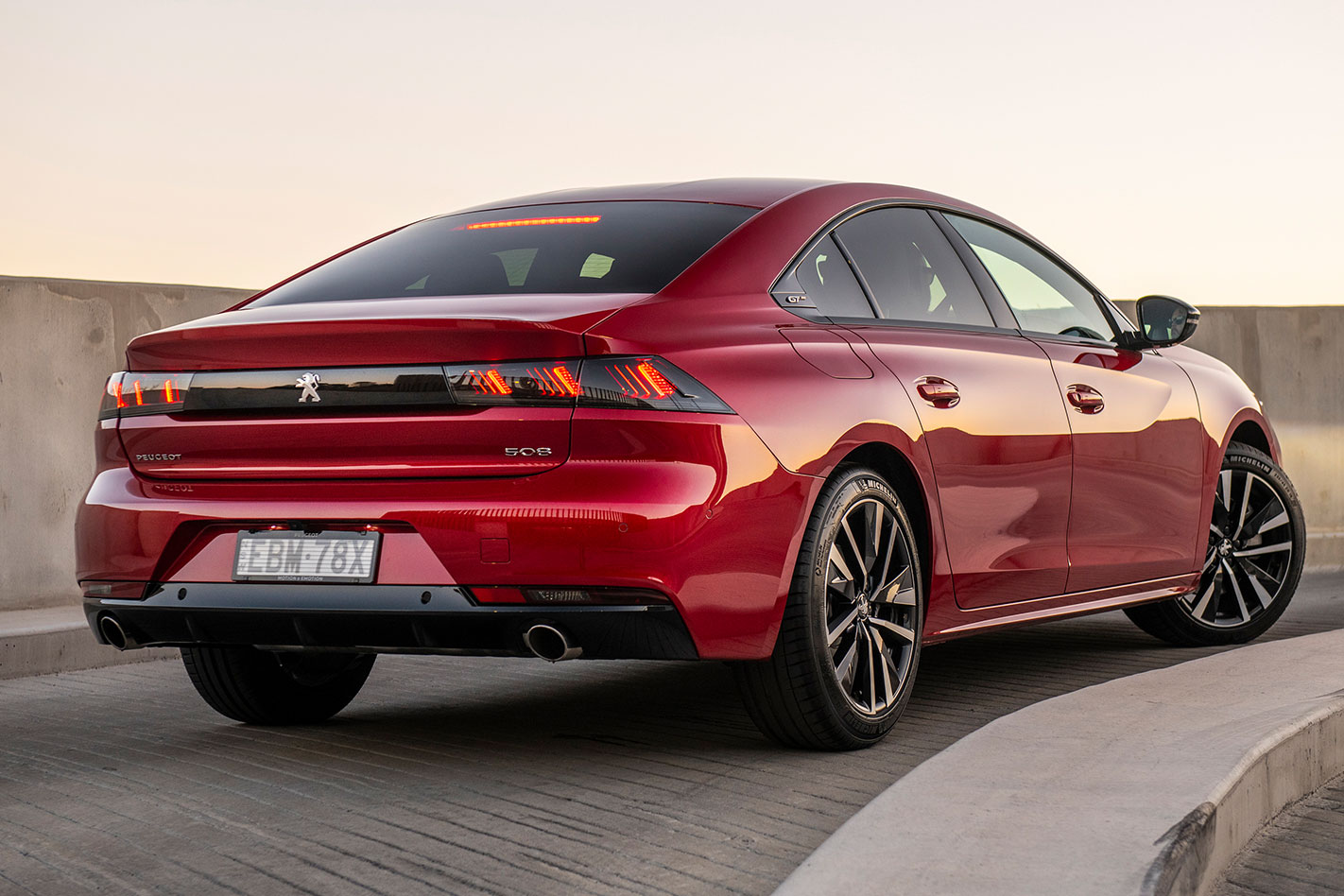
THE WHEELS REVIEW
It’s a strange visual association, I admit, but as I take my first look at Peugeot’s 508 Liftback and Sportwagon on Australian soil, all I can think of is vomit.
It’s nothing to do with a personal gut reaction to this pair of French range-toppers for the Australia line-up; on the contrary, I think that the exterior design of both is crisp, contemporary and cohesive. No, what’s making me think of ejected stomach contents is the fact it was dep-ed Enright who first drove the 508 in France (Wheels, February 2019); a drive which took him to the formidable Alpe d’Huez with a Peugeot bicycle strapped to the roof. Our intrepid staffer would go on to have a brave rolling chunder while still grimily turning the pedals of that bike up the brutal, near-14km ascent.
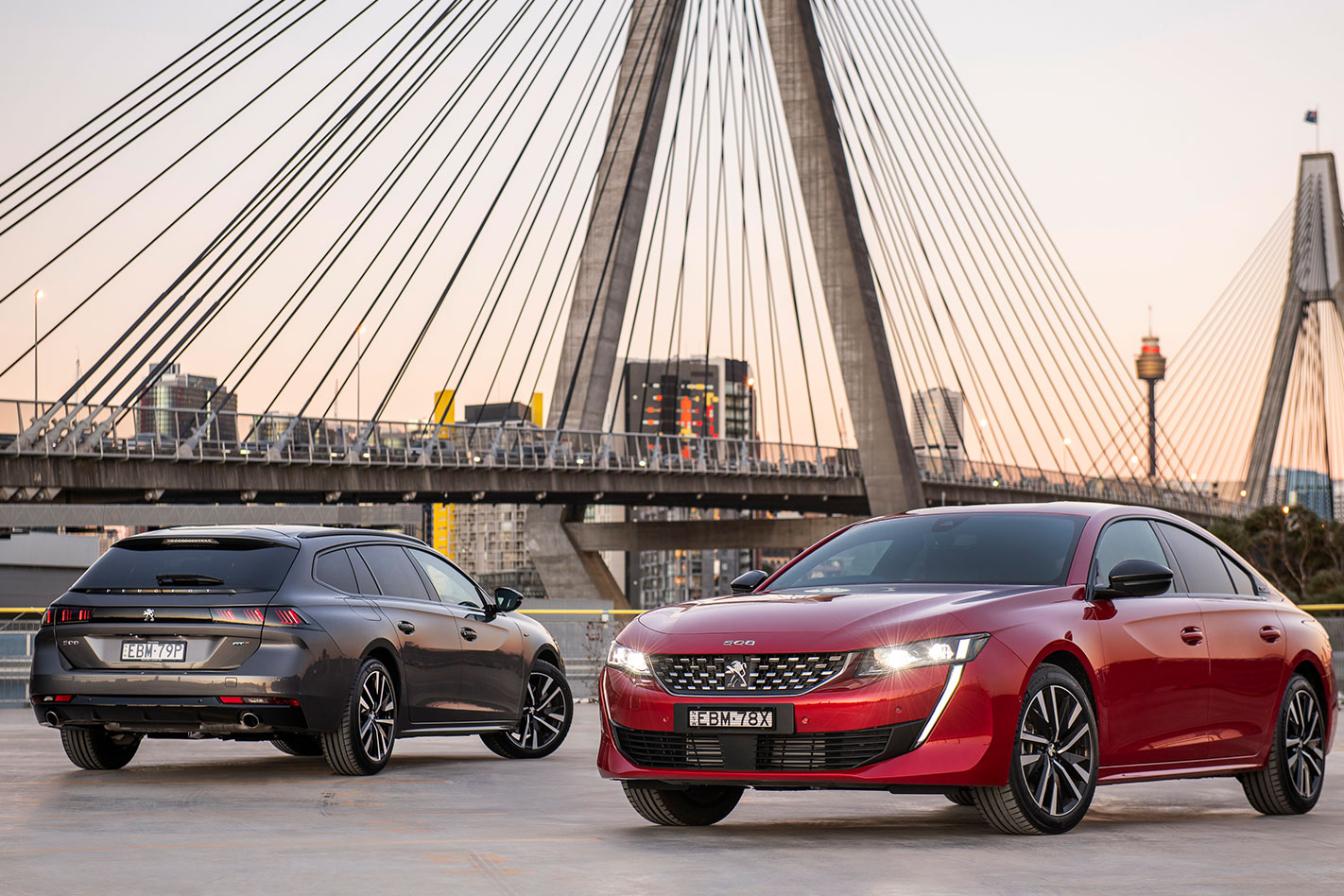
Now we’ve had a chance to drive the local-spec Fastback and Sportwagon, does that verdict still hold up? To cut to the chase: absolutely. Both bodystyles are (identically) specced to one high level, competitively priced ($54K and $56K respectively), feel suitably premium, and are superbly practical. Crucially, they both drive very, very well. But will that be enough to shift even the modest volume Peugeot’s local operation is aiming for?
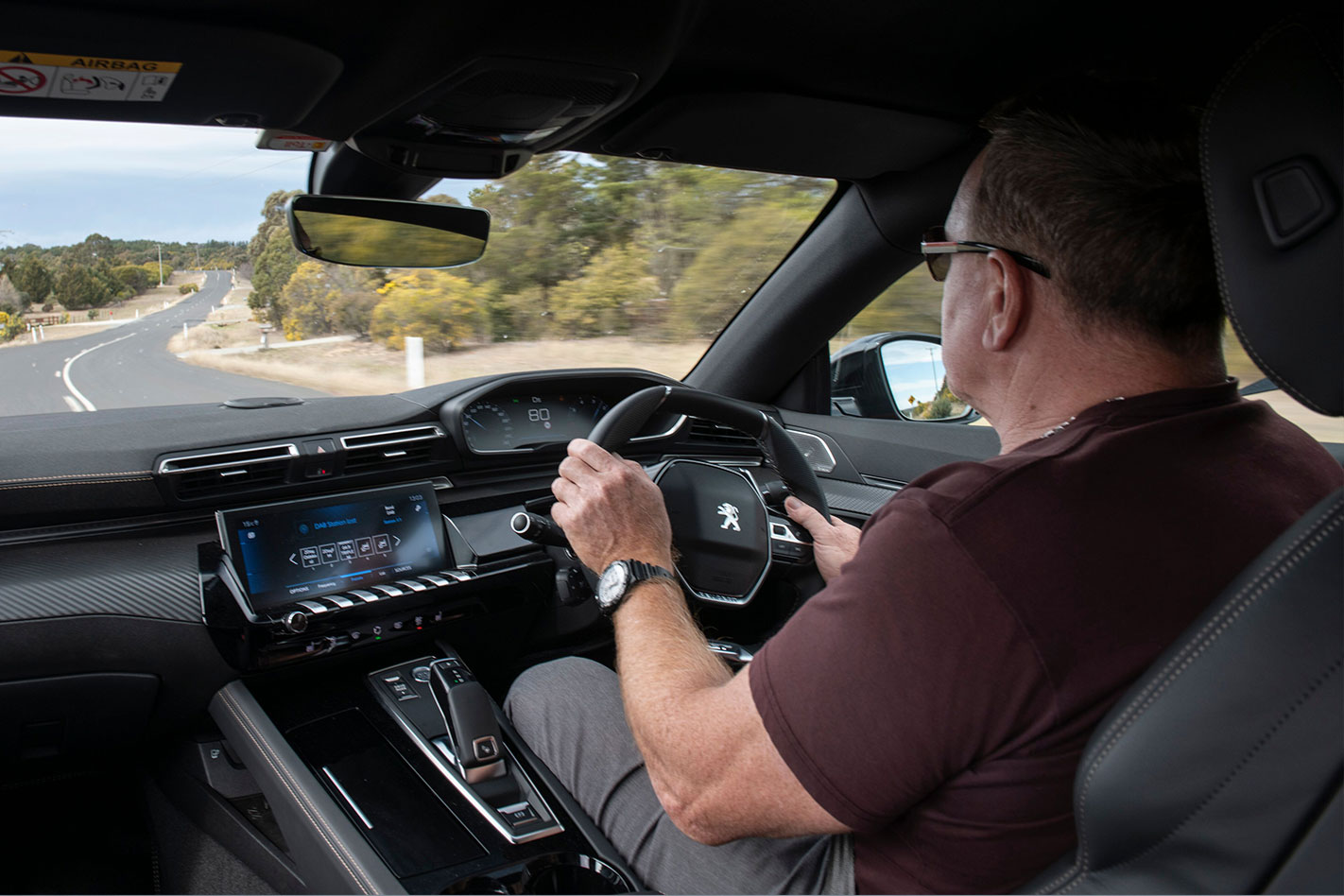
The decision to offer just one rich GT spec and a single powertrain for both bodystyles is a bold one that highlights the intention to position this model as an image restorer, numbers be damned.
Read next: Pedal to the mental: man vs bike vs car in the 2019 Peugeot 508
The petrol engine, at just 1.6 litres with turbo, may seem underdone for this class, and its outputs of 165kW/300Nm are nothing startling. But the 508, on the fresh EMP2 platform, is light (1450kg Fastback, 1470kg wagon), and combined with the new eight-speed automatic, performance feels sufficiently zesty, if short of properly sizzling. Curiously, the official 0-100km/h figure climbs to 8.1sec, rather than the 7.3 Enright was quoted in Europe for the same car, but happily, it doesn’t object to being worked hard, sounding agreeable and contained up at the 6000rpm redline.
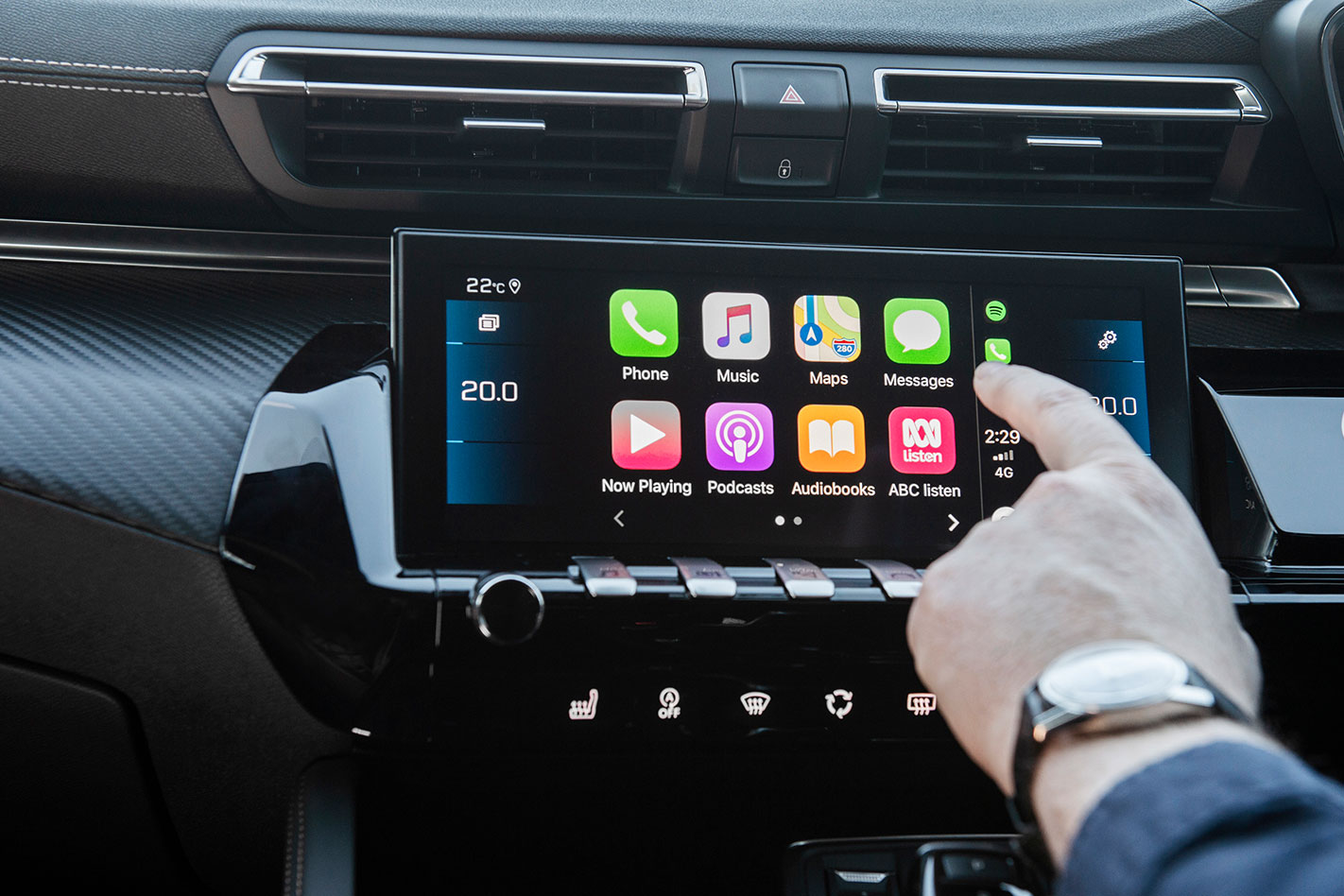
But what’s more likely to grab prospective buyers’ attention is the lush interior presentation and depth of standard equipment. The quilted leather trim, screens and general surfacing look inviting, and unlike its Euro competitors, Peugeot rejects expensive option bundles, instead loading the GT with pretty much every safety and convenience feature in the modern playbook. Only premium paint, a sunroof and dealer-fit 19s occupy space on the options list. Rather than listing it all, it’s simpler to say that the only notable omissions I could spot were front seat cooling (but they are heated, feature massage function, and are beautifully supportive) as well as a head-up display. On the latter, Peugeot would argue the polarising i-Cockpit instrument/wheel design negates this. Otherwise the kit list and active safety is all there.
Dynamically, both 508 variants feel like solid achievers on Aussie roads, rather than really blowing you away with either ride-comfort genius or corner-carving heroism. The steering is middling for rack speed, at 2.6 turns lock to lock, and while agreeable weighting can be found in one of the three assist levels, it’s always on the synthetic side of the feel spectrum, rather than offering any real tactility. But the nose always feels eager and alert, the grip level of the sensible 18s is plentiful, and in Normal mode, the chassis tune feels willing to be flung through mid-corner bumps without getting flustered. Overall, there’s an inherent agility and general responsiveness that only comes when overall weight is well contained, which it is here.
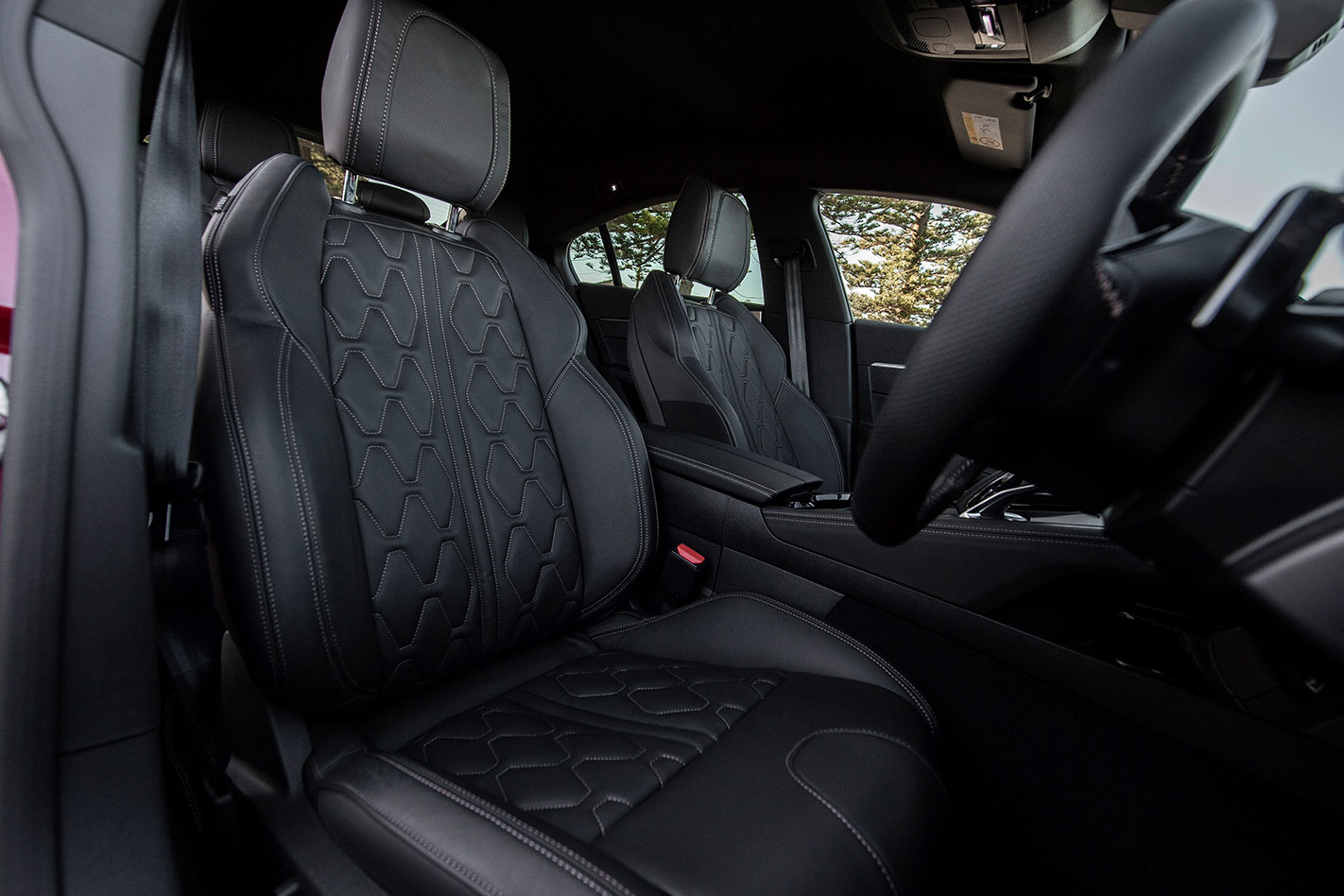
The transmission mapping is fine in normal driving and responds crisply to the paddles when you’re having a bit of a go. My only whinge was the inability to hold gears via the paddles for more than five seconds. I later learned there is a manual mode, but it’s inexplicably buried in the infotainment menu.
Never mind. As a statement of upper-end renewal for Peugeot, and as a desirable alternative to an entry-level Genesis, or perhaps a less austere alternative to a VW Passat, the 508 emerges triumphant. It deserves better than to go ignored here in the land of the SUV.
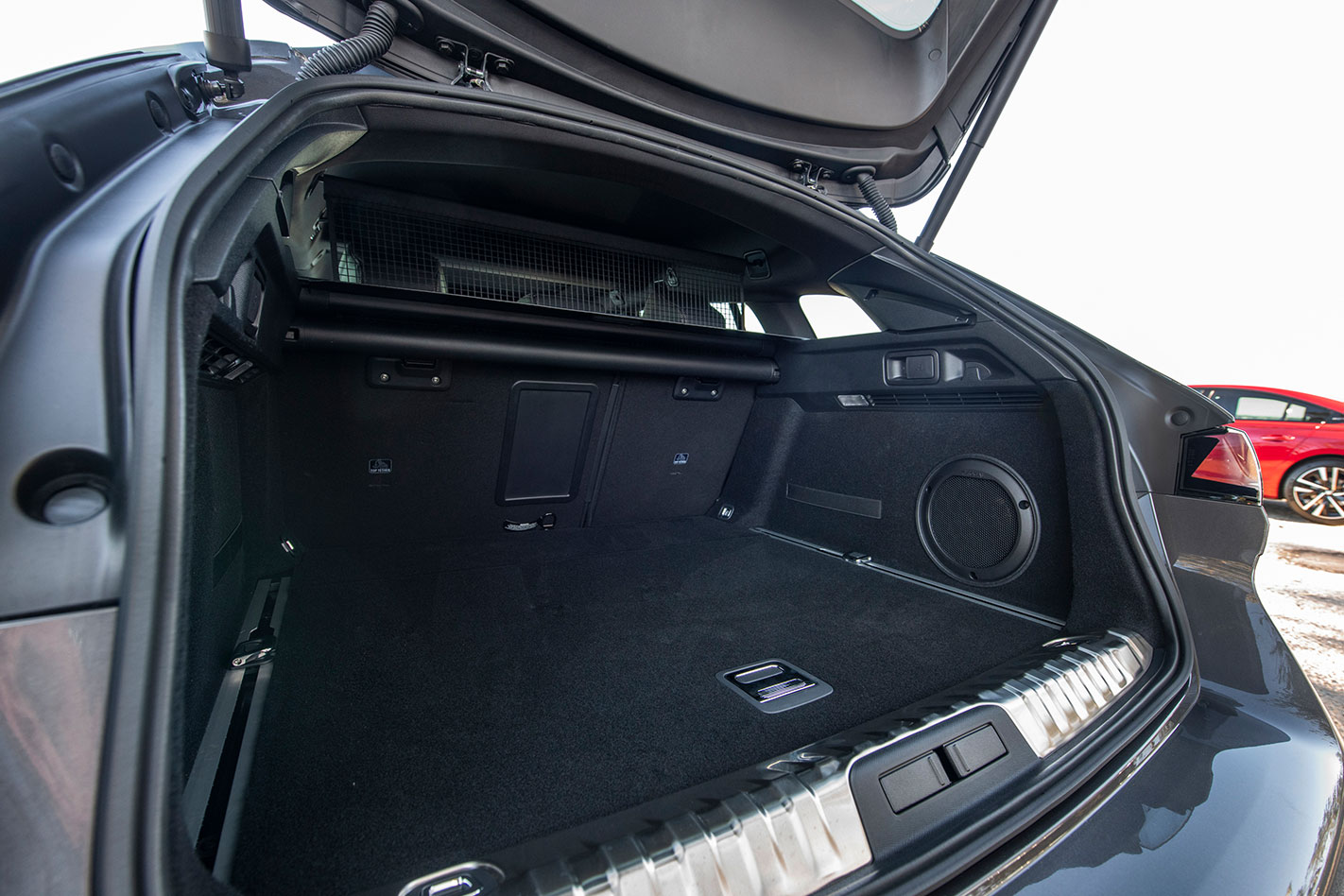
RIVALS
Audi A4 35 TSI; Infiniti Q50; Lexus IS; Genesis G70; Mazda 6 Atenza, Volvo V60/S60, VW Passat
PRICE AND SPECS
- Engine: 1598cc 4cyl, dohc, 16v, turbo
- Max power: 165kW @ 5500rpm
- Max torque: 300Nm @ 2500rpm
- Transmission: 8-speed automatic
- Weight: 1450kg
- 0-100km/h: 8.1sec (claimed)
- Economy: 6.3L/100km
- Price: $53,990
- On sale: Now
Things we like
- Exterior design
- Standard comfort, convenience, and safety equipment
- Stylish cabin
- Packaging practicality
Not so much
- Coarse-chip road noise
- Lack of sensible manual transmission mode
- Complexity of configuring individual drive mode
- Swift, not fast


